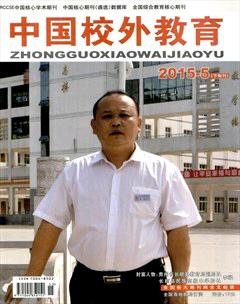The Role of Context in Translation
SU Yan–hua
【Abstrac】This paper intends to make an analysis on the inherent attributes and functions of the context to help translation beginners to better understand the meanings of words in a specific context and author's profound sentiment contained in the context.【Key words】context attribute function translation
1 Introduction
As the tendency of globalization grows, the increasing demand of cultural exchange intensifies. Owing to the differences in logical thinking and the cultural background which lead to the differences in organization and expression of words, people engaging in the translating activity, especially the beginners are at a loss in a situation of "play of words". As for translation, Eugene A Nida, a famous contemporary theorist of translation in America, has pointed out that: "Translation consists in reproducing in the receptor language the closest natural equivalent of the source language message, first in terms of meaning and secondly in terms of styles."(Nida, 1990:10) In the light this, we can conclude that the translators have to reproduce the source language which is in agreement both in appearance and in spirit.
2 The context in translation
The context falls into two parts: language environment and non-language environment. The former means that the language knowledge and the co-text, and the latter includes that knowledge of situation and the background knowledge which consist of the standard of society in particular culture and the common knowledge for the objective world and so forth. New Course book on Chinese-English Translation has pointed out that how to comprehend the designative meaning and to represent it in the targeted language is the primary task for translators, while the connotative meaning is the reflection of way of thinking, social culture and implicit emotional meaning in different countries which are often far more difficult, since they tend to be so subtle and elusive.
3 The attribute inherent in the context
3.1 Multilevel
Generally speaking, the context can be divided into several parts, such as, context in words, context in sentences, context in discourse, social and cultural background. Therefore, in the process of translation, the translators have to comprehend the source language from different perspectives, and they can inquire into the surface meaning and implication and reach the equivalence both in thought and communicative function in targeted language.
3.2 Thinking coupling
The participants don't express their meaning clearly in a specific situation, while their hints are not lost on them. We can better understand this by means of citing an example.
3.3 Limitations
The polysemy always leads the translator to rack their brains to figure out a solution and points out the direction to which they can go on their creative job, but the context will relieve them of this painstaking task. The context will function as a lighthouse which light up the journey ahead of sailors when they lost their way on a vast sea in complete darkness. Under the restriction of the context, the translators easily find a thinking passage through which they will perceive the author's intention better.
4The function inherent in the context
4.1 Determine the meaning in the source language
As Firth said: "You should know a word by the company it keeps" (ChenHong-wei, 2004:82). The collocation derived from the context can help us analyze the ploysemy because the meaning of the words will become clear in a fixed situation. Take "HongBao" for example, when people are experiencing the holidays or festivals, such as, Spring Festival, Birthday, the money being sent out expressing your good wishes, so it should be translated into "gift money"; but someone wants to get a job promotion, he will please the people in power and gives money which is also called as "HongBao", but it means "offer a bribe".(chosen from A New Coursebook on Chinese-English Translation)
4.2 The context is able to remove ambiguity of words
Ambiguity is caused by the different meanings in words themselves and varied collocation. In the written language, the context can be served as tool to comprehend the different meanings of words. When they are placed in solitude, we find no definite meaning about them. As soon as they are in a specific situation, after the logical order being straightened out among words, sentences, paragraphs, to understand the meanings of words follows as a matter of course.
4.3 The author's profound sentiment is contained in the context
Being used in a specific context, the information in the passage is invariably tinted with author's emotional coloring, which reveals the stylistics and creativity of the author. The translators, in the process of translating, should bring their creativity and inspiration into full play so that the translated language is not inferior to the source language both in expression and deep implication. When people translate language characterized with Chinese thinking and the composition is peculiar to Chinese, they must find out the logical order in the source language and readjust the word order so that the translated works conforms to the thinking habit of English-speaking readers who can acquire the similar aesthetic feeling.
5 Summary
This paper analyzes the attributes and functions of the context, and their role of combination play in translation. The paper means to emphasize the importance of the context to the translators, especially beginners, nothing can be accomplished one day and practice makes perfect. In this way, they may sense the essentials of translation and make progress day by day.
References:
[1]Eugene. A.Nide Language and Culture-Context in Translating [M].上海:上海外语教育出版社.
[2]陈宏薇,李亚丹.新编英汉翻译教程[M].上海:上海外语教育出版社,2004.
[3]冯庆华.实用翻译教程[M].上海:上海外语教育出版社,2001 .
[4]耿龙明.思维、语境与翻译[J].上海外国语学院学报,1992,(3):17-23.

